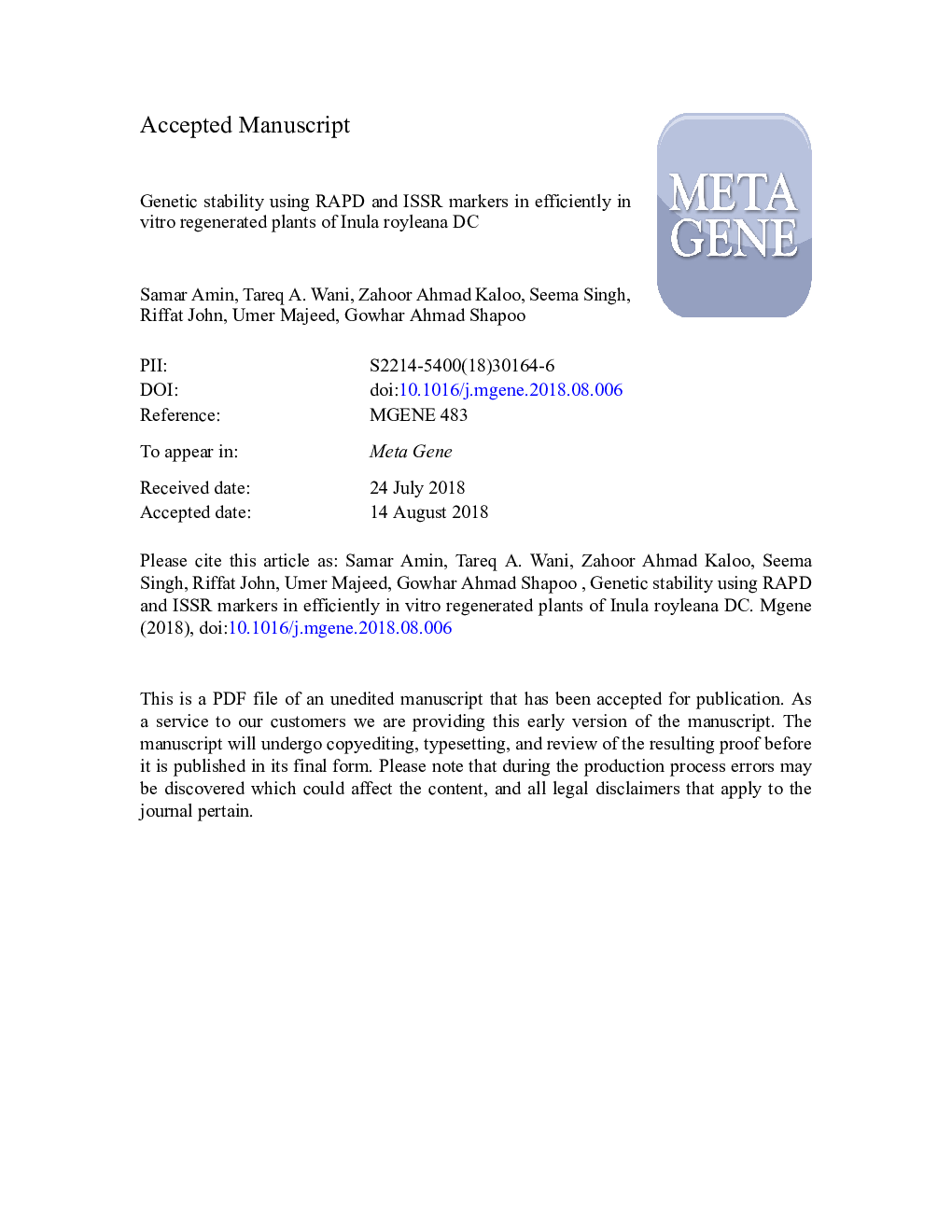| Article ID | Journal | Published Year | Pages | File Type |
|---|---|---|---|---|
| 9954315 | Meta Gene | 2018 | 23 Pages |
Abstract
Inula royleana (Asteraceae) is a perennial medicinal herb native to Western Himalaya. In Kashmir Himalaya it is commonly known as 'GugiPhool'. The plant has been traditionally used for various putative health benefits like headache, intestinal problems and blood pressure. The plant is rich source of alkaloids and other metabolites. The important medicinal properties which include antimicrobial, anti-inflammatory, antiproliferative are attributed to these metabolites. Indiscriminate overexploitation and overgrazing has threatened the species in wild. Plant tissue culture is one of the important avenues for the conservation of germplasm in its purest form. During present endeavour, a reproducible protocol was developed for micropropagation and consequently for the conservation of the species. Regenerated callus from leaf explant was exposed to different combinations of phytohormones for shoot regeneration. The relative concentration of BAP to IAA greatly affected the multiple shoot regeneration. Best results were obtained when Murashige and Skoog's (MS) medium was supplemented with BAP (5â¯mg/L)â¯+â¯IAA (2â¯mg/L). Regenerated shoots were rooted on White's modified root culture medium, successfully acclimatized and transferred to field conditions with 100% survival rate. For confirming the genetic stability, molecular markers like RAPD and ISSR were used. There was monomorphic banding pattern in both the markers among micropropagated and the mother plants, confirming their genetic stability.
Related Topics
Life Sciences
Biochemistry, Genetics and Molecular Biology
Biochemistry, Genetics and Molecular Biology (General)
Authors
Samar Amin, Tareq A. Wani, Zahoor Ahmad Kaloo, Seema Singh, Riffat John, Umer Majeed, Gowhar Ahmad Shapoo,
